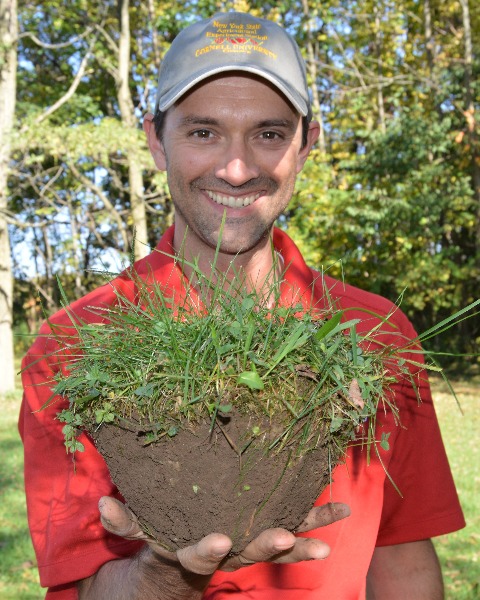Back
Plant-Insect Ecosystems
Student Competition 10-Minute Paper
Grad P-IE: Biodiversity - Horticulture
2nd Place: Using urban grasslands to explore constraints of soil microarthropod biodiversity and function
Monday, November 14, 2022
9:36 AM – 9:48 AM PT
Location: Vancouver Convention Centre, Meeting Room 121

Hayden Bock
PhD Candidate
Cornell University
Geneva, New York
Kyle Wickings
Assistant Professor
Cornell University
Geneva, New York
Presenting Author(s)
Co-Author(s)
Urban environments contain an array of biotic, environmental, and human disturbance gradients which are increasingly recognized as unique places for testing basic and applied theories in ecology. Soil animals like microarthropods are one of the most numerous and consequential, but lesser-studied organisms in urban systems. We attempted to partially address this knowledge gap by examining soil microarthropod communities along a rural-urban gradient of 40 public parks in Rochester, NY. In this study, we explored relationships between the abundance, biodiversity, and functional richness of microarthropod communities to biotic, spatial, pedologic, and urbanization metrics. As urbanization (e.g., imperviousness and population density) increased, we expected soil animal biodiversity, abundance, and functional richness to decrease. Second, we expected that park size would positively correlate to microarthropod biodiversity and even ameliorate the negative impacts of urbanization on biodiversity in some instances. Finally, we expected plant diversity to be a key driver of soil microarthropod community composition within parks sharing similar urbanization and spatial constraints. Contrary to our expectations, our findings show that microarthropod abundance and diversity metrics are not negatively related to urbanization, and in some instances, urbanization may even enhance these soil communities. Further, our results demonstrate the interrelated role of plant communities and abiotic factors (e.g., soil moisture, texture, and bulk density) in altering microarthropod communities. Our results suggest that contrary to current thinking, urban greenspaces, and their soil microarthropod communities can be surprisingly diverse, which indicates their potentially important role as reservoirs for biodiversity and soil ecosystem services in urban areas.


